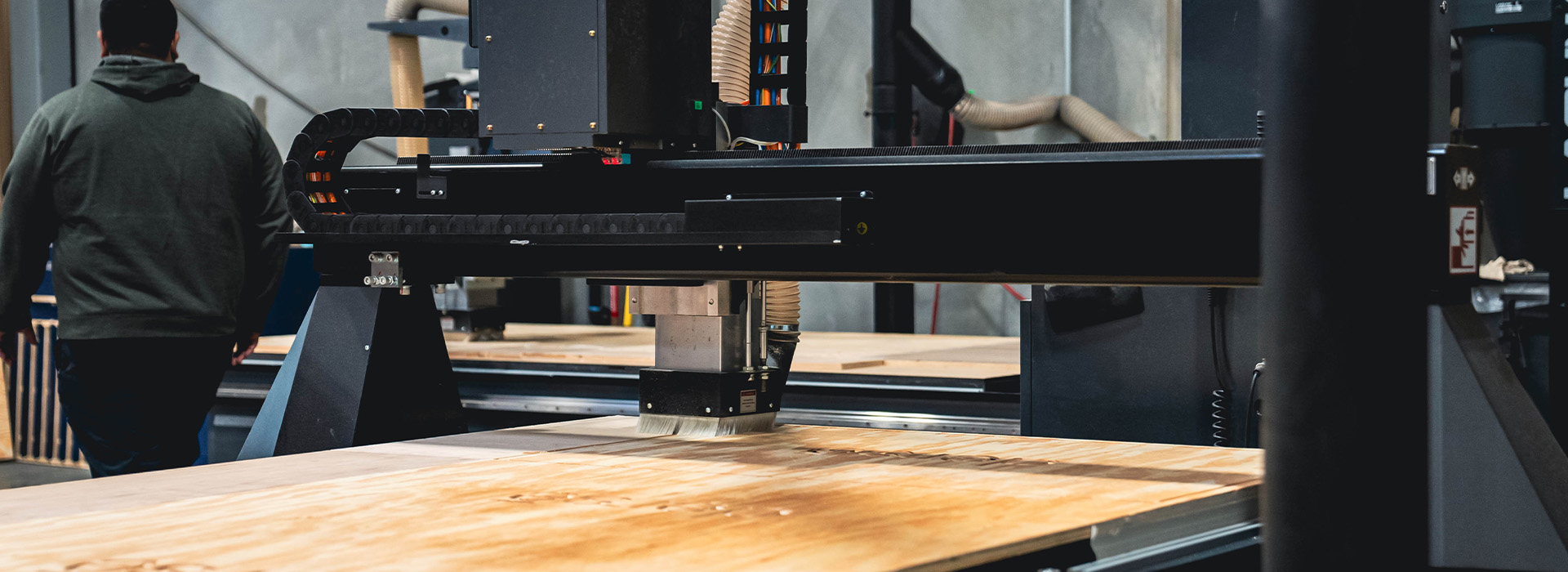How Virtual Trade Shows are Changing the Landscape for Exhibitors


Shrestha Subham
The world of trade shows has undergone a remarkable transformation in recent years. Once defined by crowded convention halls, elaborate physical displays, and in-person networking, today’s trade shows have expanded beyond the show floor and into the digital realm. As industries adapted to global changes and technological advancements, virtual trade shows emerged as a powerful alternative to traditional exhibiting. This evolution has not only reshaped how companies interact with audiences but also introduced new strategies, tools, and expectations. At Steadfast Displays, we understand the importance of adapting to this shift. Our team works with brands to develop cutting-edge solutions that address both physical and digital needs, ensuring that every display—whether in-person or online—delivers maximum impact.
The Emergence of Virtual Trade Shows
Virtual trade shows gained traction as a response to restrictions on in-person events, but they’ve proven to be more than just a temporary fix. These digital exhibitions provide companies with a platform to showcase products, network with prospects, and generate leads without the need for physical presence. Using custom-designed digital booths, webinars, chat features, and interactive tools, exhibitors are now able to deliver immersive experiences directly to attendees’ screens. This shift has redefined what it means to connect with audiences, breaking down geographical barriers and making trade shows more accessible than ever before.
The ability to reach a global audience without the cost of travel, shipping, or physical fabrication has made virtual trade shows appealing across industries. Attendees can explore a range of booths, attend live sessions, and interact with brand representatives from anywhere with an internet connection. As these events become more sophisticated, they offer many of the same benefits as traditional trade shows—along with a few unique advantages.
Virtual Trade Show Trends Shaping the Future
One of the most significant virtual trade show trends is the rise of 3D, interactive booth environments. Rather than static web pages, exhibitors now offer fully immersive virtual booths where users can explore product displays, click on videos, download brochures, and schedule one-on-one meetings with representatives. These dynamic environments help simulate the experience of walking through a physical space and create a sense of presence that keeps attendees engaged.
Another important trend is the integration of artificial intelligence and data-driven features. AI-powered matchmaking tools help connect attendees with relevant exhibitors based on interests and behavior. Real-time analytics provide insights into booth traffic, content engagement, and user behavior, allowing exhibitors to fine-tune their strategy in real-time or for future events. These tools are transforming how success is measured and how exhibitors adapt their messaging on the fly.
Live streaming and on-demand content are also central to the virtual experience. Exhibitors can host product demos, panel discussions, or training sessions that attendees can watch live or revisit later. This flexibility extends the life of event content and allows brands to continue engaging attendees long after the official event has ended.
Benefits of Virtual Exhibiting for Brands
The appeal of virtual trade shows lies in their ability to increase accessibility while lowering operational costs. Without the need for booth shipping, travel expenses, and venue logistics, companies can allocate more resources toward content creation and attendee engagement. Smaller brands that might not have been able to afford traditional exhibit spaces now have the opportunity to participate on a level playing field.
Another key benefit is the ability to measure engagement with precision. Digital environments provide detailed data on visitor behavior, such as how long they stayed at your booth, which content they viewed, and whether they interacted with any team members. This data can be invaluable for sales teams and marketing departments looking to qualify leads or refine follow-up campaigns.
The flexibility of content delivery is also a major advantage. Pre-recorded videos, downloadable resources, and interactive modules allow exhibitors to craft a rich, informative experience that caters to various learning styles and attention spans. This diversity in content presentation helps maintain attendee interest and increases the likelihood of meaningful engagement.
Challenges of the Virtual Format
Despite its advantages, virtual exhibiting also comes with its own set of challenges. One of the most notable is the lack of face-to-face interaction. Human connection is a critical part of sales and relationship-building, and translating that into a digital format requires thoughtful planning and creativity. Exhibitors must find new ways to build trust and foster engagement in an environment where personal interaction is limited.
Technical difficulties can also affect the virtual experience. From platform navigation issues to internet connectivity problems, technology introduces variables that can hinder engagement. Exhibitors must ensure that their content loads quickly, is mobile-friendly, and is accessible across devices to avoid alienating potential leads.
Another hurdle is digital fatigue. With so many virtual events taking place, attendees may become overwhelmed or disengaged if the experience doesn’t capture their attention quickly. That’s why it’s crucial for brands to focus on high-quality visuals, clear messaging, and interactive elements that keep users involved throughout the event.
Developing Effective Online Exhibit Strategies
To thrive in the virtual trade show space, companies must develop strategic approaches tailored to the digital format. This starts with the design of the virtual booth. Just like in a physical space, your digital booth should reflect your brand identity and provide a clear path for interaction. Clean visuals, intuitive navigation, and bold calls to action are essential for guiding attendees and sparking conversation.
Content also plays a pivotal role in online exhibit strategies. High-quality videos, live product demos, and downloadable resources should be planned in advance and optimized for engagement. Offering incentives, such as exclusive discounts or giveaways, can help boost participation and keep attendees interested.
In addition, it’s important to integrate pre-event marketing and post-event follow-up into your strategy. Promoting your presence through email campaigns, social media, and paid ads can drive traffic to your virtual booth. After the event, following up with qualified leads using personalized messaging ensures that momentum isn’t lost once the show ends.
The Emergence of Hybrid Trade Shows
As live events return, many organizers are embracing hybrid formats that blend physical and virtual components. This allows attendees to participate in person or online, expanding the reach of the event and offering greater flexibility. For exhibitors, this means preparing for both types of audiences and ensuring consistency across both channels.
Hybrid booths may include interactive kiosks that connect to digital content, live broadcasts of booth activities, or augmented reality components that enhance the visitor experience. Steadfast Displays helps clients navigate these complexities by offering custom builds that are designed with digital integration in mind. Whether you’re creating a traditional booth with digital add-ons or a fully immersive hybrid space, our team ensures that your exhibit tells a cohesive and compelling story.
How Steadfast Displays Supports Virtual and Hybrid Exhibiting
At Steadfast Displays, we believe that innovation in exhibit design must evolve alongside industry trends. That’s why we offer full-service support for virtual trade shows and hybrid events. From concept development and 3D rendering to digital asset creation and platform compatibility, we help brands build virtual booths that engage and convert.
Our design process begins with understanding your goals and audience. We then craft a virtual environment that highlights your brand, facilitates interaction, and delivers measurable results. For hybrid events, we ensure that your physical booth integrates seamlessly with its digital counterpart, creating a unified experience for all visitors.
Our team also offers guidance on technology selection, digital content strategies, and event planning to ensure your virtual trade show presence performs as powerfully as your in-person exhibit. With our experience in both digital and physical environments, we provide the flexibility and expertise needed to compete in today’s evolving exhibition landscape.
Adapting to the New Trade Show Reality
The trade show industry is not going back to the way it was—it’s moving forward into a more flexible, digitally enhanced future. Virtual trade shows are no longer just a temporary workaround; they’re a permanent fixture in the marketing landscape. Exhibitors who embrace these changes, invest in digital strategy, and prioritize user experience will be the ones who continue to stand out and thrive.
At Steadfast Displays, we’re committed to helping you navigate this shift with confidence. Whether you’re launching a digital booth for the first time or preparing for a large-scale hybrid activation, our team is here to provide creative direction, technical support, and expert fabrication every step of the way.
If you’re ready to take your trade show strategy to the next level, connect with Steadfast Displays and discover how virtual exhibit design can elevate your brand experience, drive engagement, and position you for success in a rapidly changing world.









